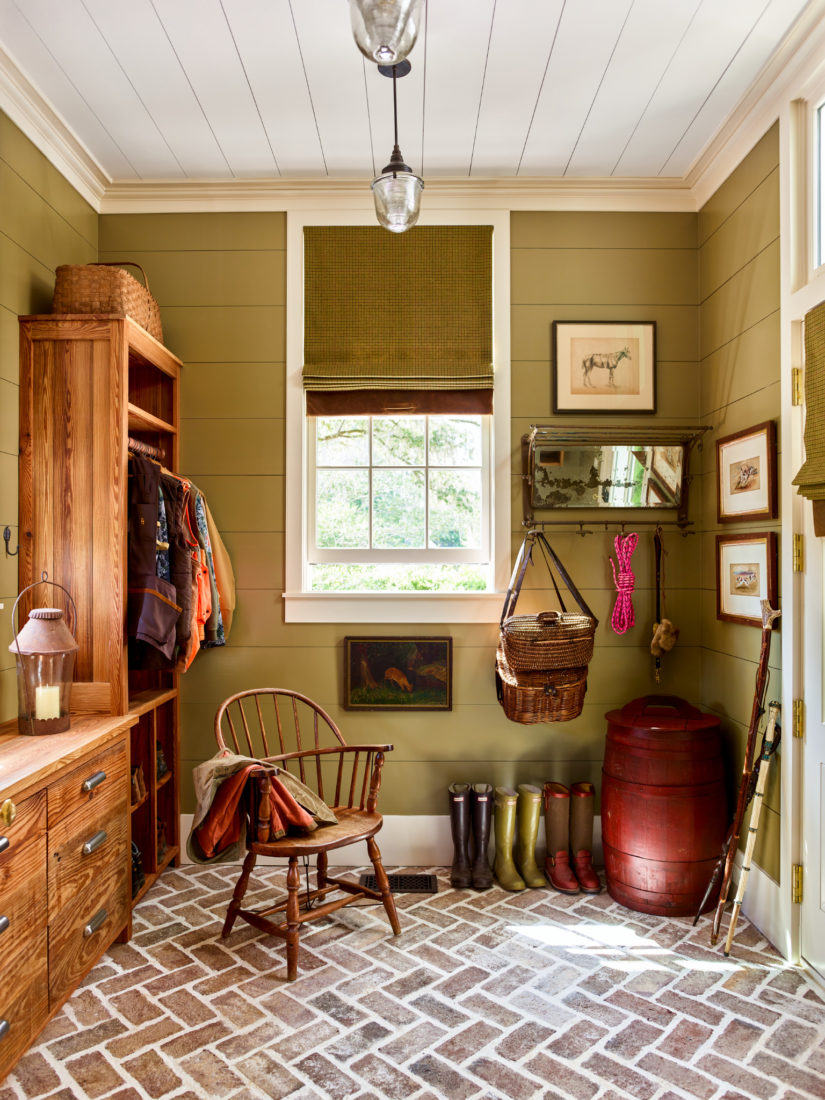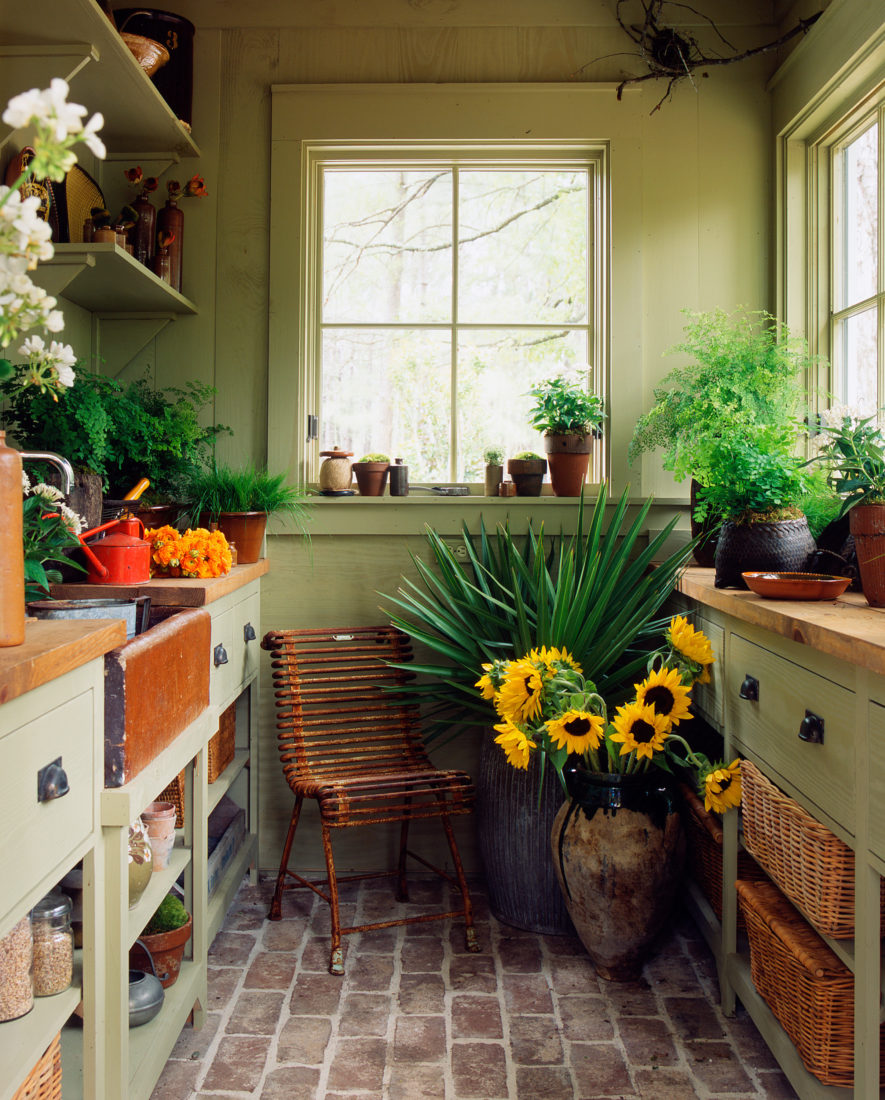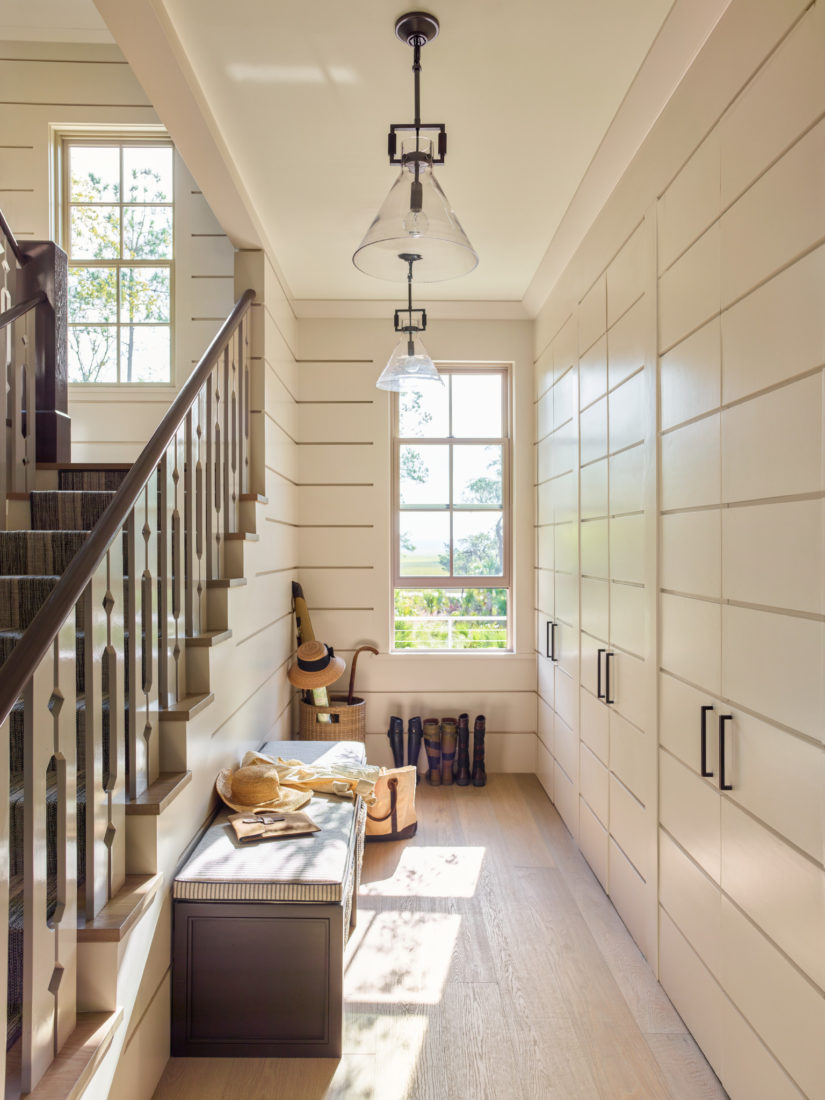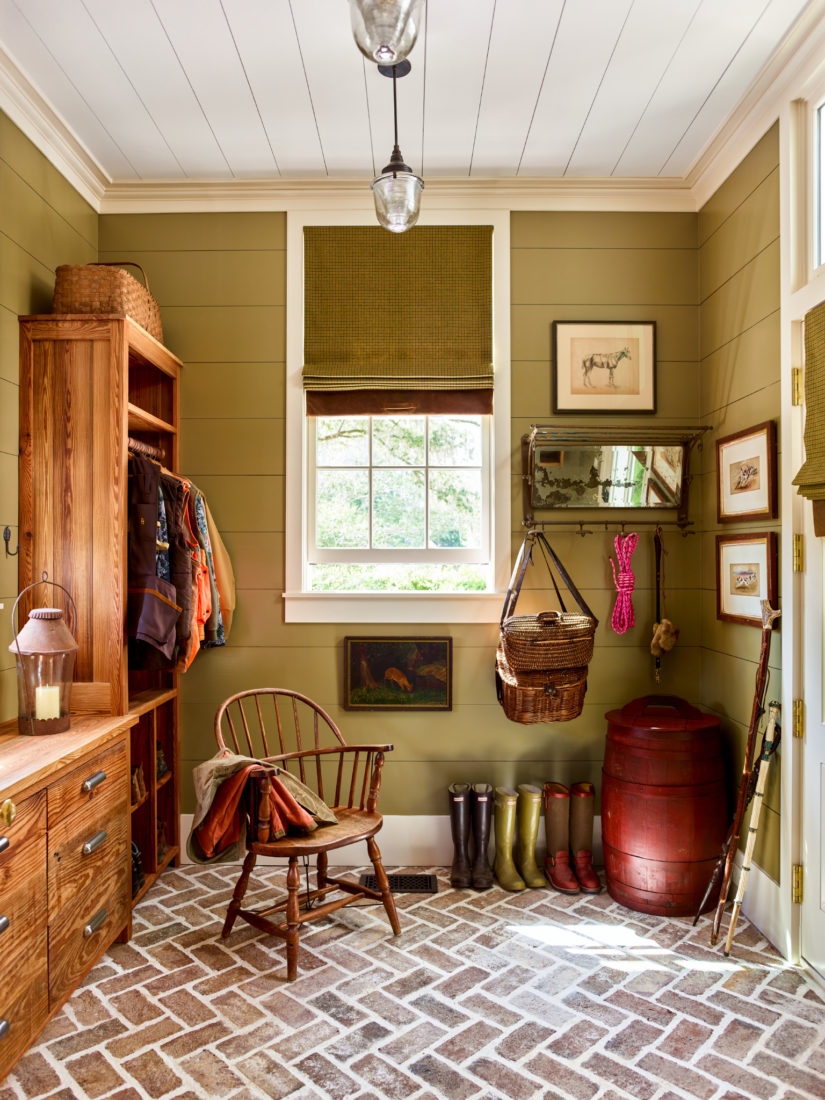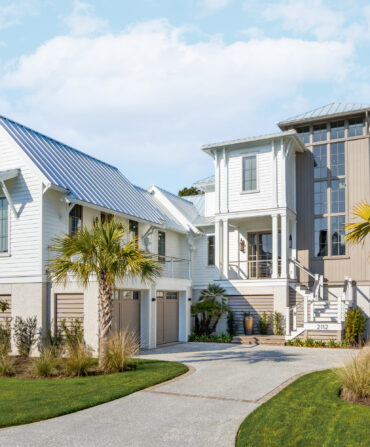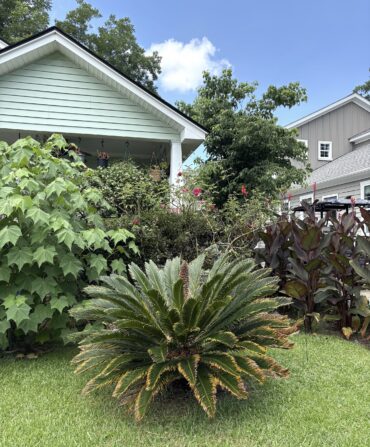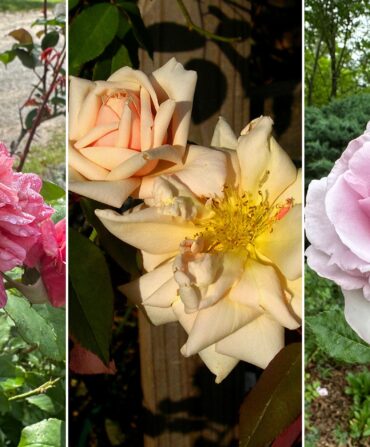The best Southern mudrooms seem to be built like boats, with little nooks and dedicated spots for whatever it is that a family loves most, from sports and the sporting life (and the accompanying fly rods, waders, or cleats) to all things garden, and tiny jackets and muddy muck boots and old carved walking sticks the proof of life being lived. But the very best emphasize beauty as much as function and offer the kind of friendly welcome that more formal entries do not.
Their history, of course, lies in practicality. “Mudrooms in American architecture evolved out of necessity, providing a separate and contained space to come in and clean up before entering the home,” explains Jim Strickland, the founder of the architectural firm Historical Concepts in Peachtree City, Georgia. “These rooms were most often stripped down, with a primitive bench to sit on and take off muddy boots, and simple knobs or peg hooks for hanging jackets, all aimed at uncomplicating the process of moving from outdoors to indoors.”
Southern homeowners and designers, however, have long elevated the concept with thoughtful elements such as custom millwork; soothing paint colors that provide a moment of calm and blend with both the natural environment outside the door and the aesthetic of the interior; and hard-working finishes that weather grimy footprints well. This idea doesn’t stray far from the back porches of early American farmhouses or the traditional English “boot room” or “bootility” that’s so emblematic of country life and hunting culture across the pond.
I particularly love the serious charm Strickland and his team generate in the mudrooms they design for modern Southern homes. Their niches look as though they’ve always been there, thanks in part to authentic seating, building materials, and storage solutions, which all align with a home’s unique architectural character.
“In the South, we often select brick floors that are indigenous to the region of the home,” says Terry Plyant, senior principal for Historical Concepts. Millwork and built-ins are also key. “Because of the wear-and-tear these rooms get, we design these rooms with ample built-ins, often behind doors to keep clutter hidden. With all the hard surfaces, a cushioned bench or handmade light fixture softens things, too,” adds Kevin Clark, a Historical Concepts architect. Clark adds that natural light is essential as well. “So much so that you don’t feel that you have to turn on a light when you enter the room, since your hands are likely full anyway!”
Below are a few of my favorite mudrooms by Historical Concepts, from both traditional and contemporary Southern projects.
